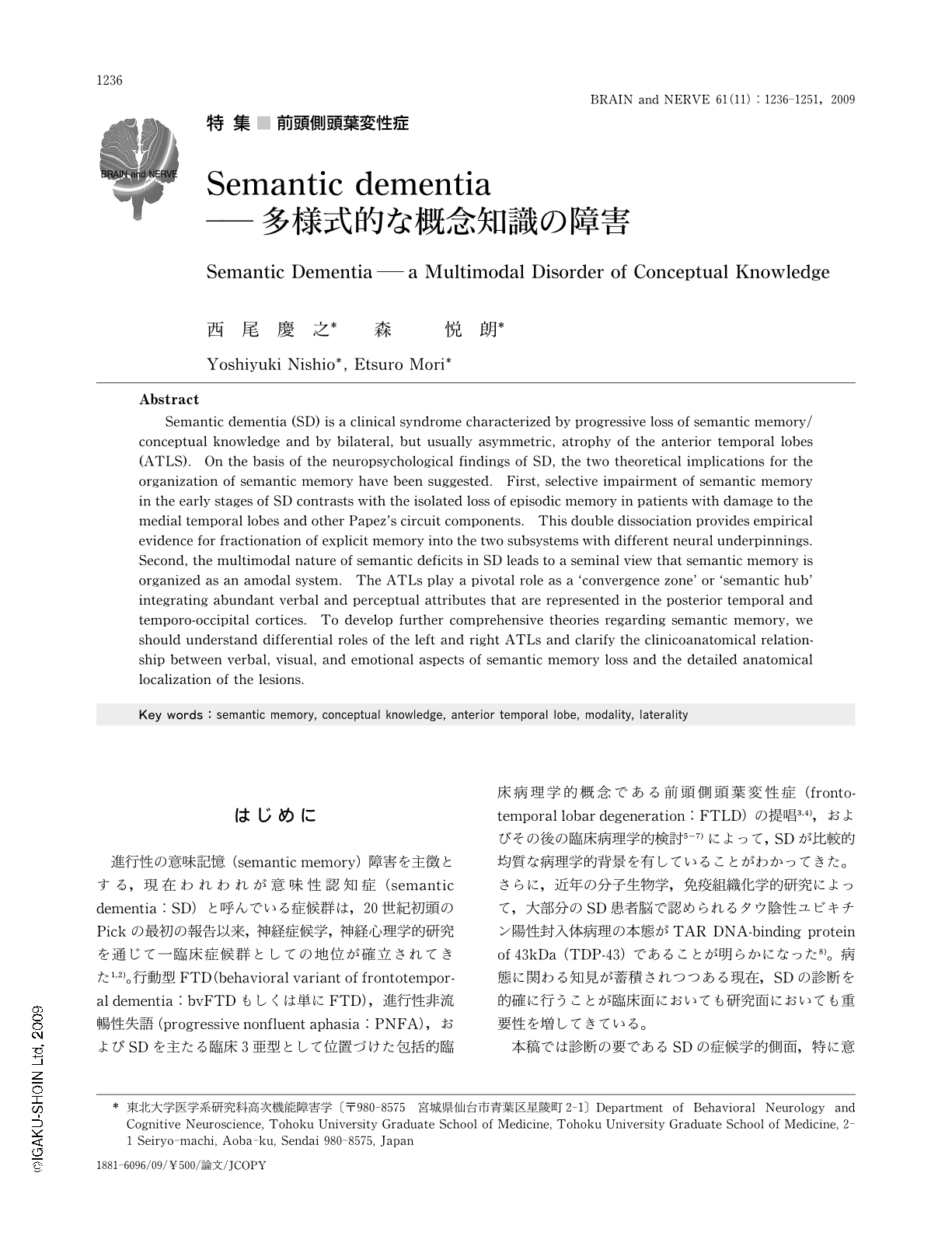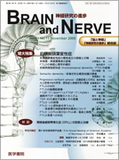Japanese
English
- 有料閲覧
- Abstract 文献概要
- 1ページ目 Look Inside
- 参考文献 Reference
はじめに
進行性の意味記憶(semantic memory)障害を主徴とする,現在われわれが意味性認知症(semantic dementia:SD)と呼んでいる症候群は,20世紀初頭のPickの最初の報告以来,神経症候学,神経心理学的研究を通じて一臨床症候群としての地位が確立されてきた1,2)。行動型FTD(behavioral variant of frontotemporal dementia:bvFTDもしくは単にFTD),進行性非流暢性失語(progressive nonfluent aphasia:PNFA),およびSDを主たる臨床3亜型として位置づけた包括的臨床病理学的概念である前頭側頭葉変性症(frontotemporal lobar degeneration:FTLD)の提唱3,4),およびその後の臨床病理学的検討5-7)によって,SDが比較的均質な病理学的背景を有していることがわかってきた。さらに,近年の分子生物学,免疫組織化学的研究によって,大部分のSD患者脳で認められるタウ陰性ユビキチン陽性封入体病理の本態がTAR DNA-binding protein of 43kDa(TDP-43)であることが明らかになった8)。病態に関わる知見が蓄積されつつある現在,SDの診断を的確に行うことが臨床面においても研究面においても重要性を増してきている。
本稿では診断の要であるSDの症候学的側面,特に意味記憶障害に焦点を当てて概説を行う。鑑別診断などの臨床的な話題のみならず,意味記憶/概念知識の神経基盤に関わる神経心理学的,認知神経科学的側面に関しても紙幅を割いて紹介する。
Abstract
Semantic dementia (SD) is a clinical syndrome characterized by progressive loss of semantic memory/conceptual knowledge and by bilateral,but usually asymmetric,atrophy of the anterior temporal lobes (ATLS). On the basis of the neuropsychological findings of SD,the two theoretical implications for the organization of semantic memory have been suggested. First,selective impairment of semantic memory in the early stages of SD contrasts with the isolated loss of episodic memory in patients with damage to the medial temporal lobes and other Papez's circuit components. This double dissociation provides empirical evidence for fractionation of explicit memory into the two subsystems with different neural underpinnings. Second,the multimodal nature of semantic deficits in SD leads to a seminal view that semantic memory is organized as an amodal system. The ATLs play a pivotal role as a ‘convergence zone' or ‘semantic hub' integrating abundant verbal and perceptual attributes that are represented in the posterior temporal and temporo-occipital cortices. To develop further comprehensive theories regarding semantic memory,we should understand differential roles of the left and right ATLs and clarify the clinicoanatomical relationship between verbal,visual,and emotional aspects of semantic memory loss and the detailed anatomical localization of the lesions.

Copyright © 2009, Igaku-Shoin Ltd. All rights reserved.


